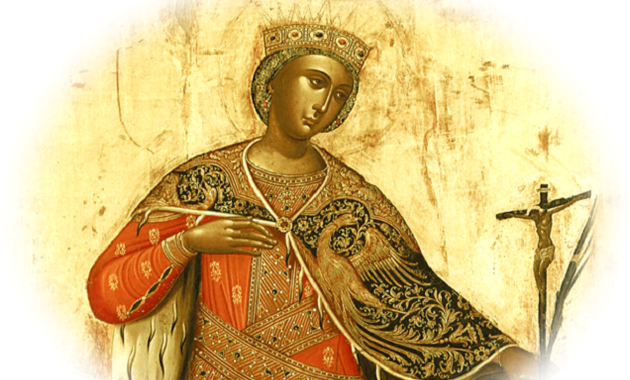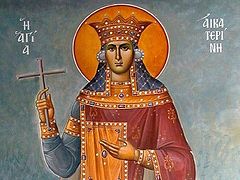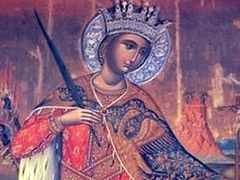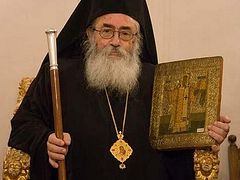Source: Pemptousia
November 25, 2017
Sinai became widely known, particularly in Europe, with the spreading of the fame and cult of St. Catherine. Symeon Metaphrastes contributed greatly in making the life of the Saint known to the laity when, in the 10th century, he wrote on “the martyrdom of the great Martyr and in the name of Christ victorious Saint Catherine”.
The high-born learned maiden had studied at the ethnic schools of that age philosophy, rhetorics poetry, music, physics, mathematics, astronomy and medicine. He beauty and amazing learning, her aristocratic birth and noble character did not prevent her form accepting Jesus Christ, “the heavenly spouse”, and she was baptized a Christian.
When in the beginning of the 4th century the emperor Maximum persecuted the Christians, Catherine publicly accused the emperor of worshipping idols and fearlessly confessed her Christian faith. To dissuade her, the emperor ordered fifty philosophers to discuss with Catherine and demolish her Christian arguments. Their attempt failed, and they, along with many others from the emperor’s closer circle, believed in Christ. When Maximus realized the futility of these efforts, he resorted to torture. He gave orders for the making of spiked wheels, but even this horrible torment failed to break the Saint, who was finally beheaded. Her body was then taken by angels and carried to the highest peak of Mount Sinai.
St. Catherine’s martyrdom and her relation to the Monastery of Sinai became known in the West when Symeon Metaphrastes brought relics of the Saint to Rouen and Treves, in France. The fame of the Saint spread rapidly in Europe and the Monastery of Sinai came to be known as the Monastery of St. Catherine. Generous gifts were sent to Sinai and estates were donated to the Monastery by European countries. “No Saint was loved in the West more than St Catherine”. Master painters-like Fra Angelico, Correggio, Rubbens, Titian and Murillo-immortalized on canvas scenes from the life and martyrdom of St. Catherine.
The Saints’s cult and iconography had likewise spread in the East. She was portrayed in royal robes, wearing a crown and surrounded with objects alluding to her wisdom and martyrdom: a quill-pen, a globe, books, and a spiked wheel. To these the Byzantine hagiographers added depictions of Mount Sinai, Mount Horeb and the Mount of St. Catherine.
...Read the rest at Pemptousia.




